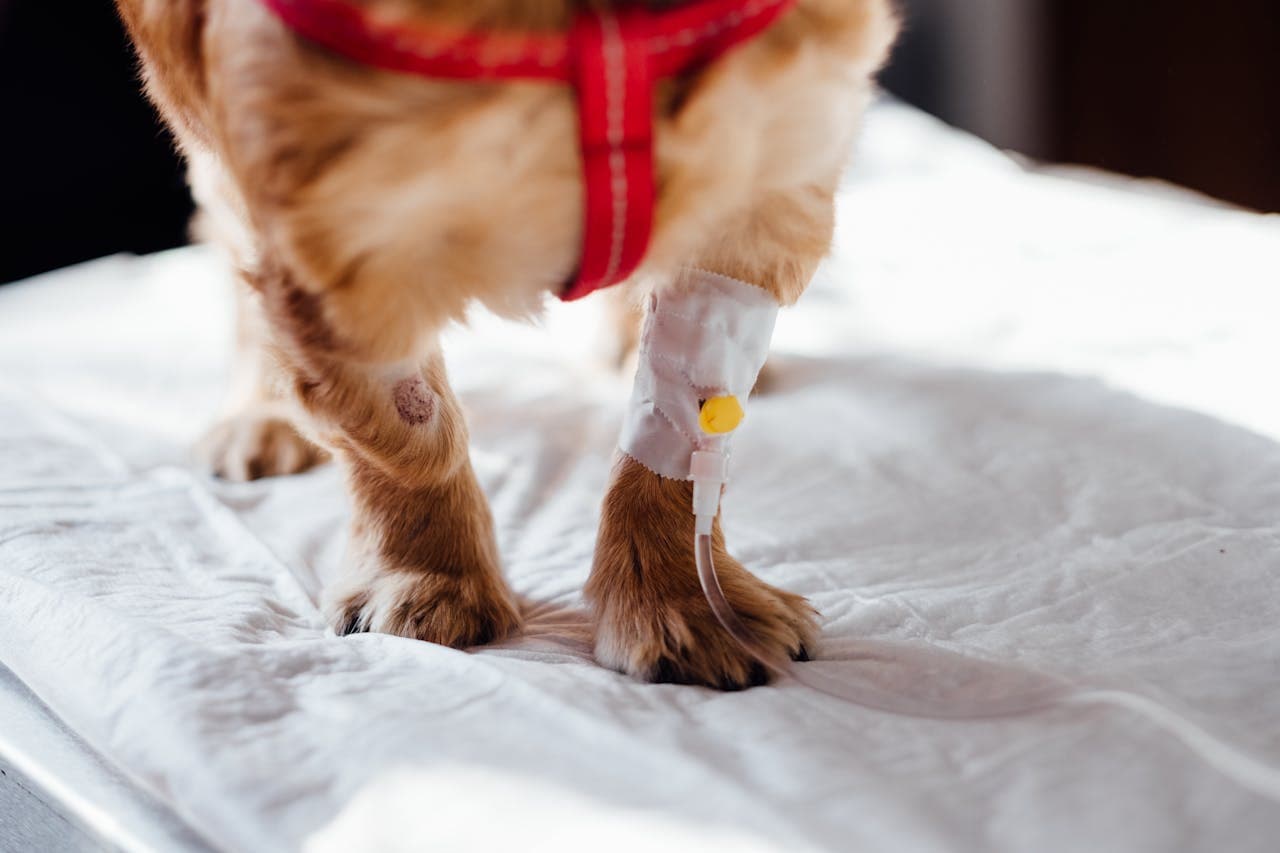
Lipoma

Our guide has been authored by qualified veterinarians, but should not be taken as substitute for medical advice or professional veterinary consultation. If your pet displays any unusual symptoms, we strongly advise seeking guidance from a veterinarian
Understanding Lipoma in dogs
Fat cells, called lipocytes or adipocytes, are typically located in the fat layer under the dog’s skin but can also be found in other areas, such as between muscles, around the intestines, and near the heart. Like other tissues, the fat tissue may experience uncontrolled cell growth, leading to a tumor. In most cases, these tumors, called lipomas (not to be confused with lymphoma) are benign, but it’s important to rule out cancerous fatty tumors (liposarcomas) or mast cell tumors. Lipomas may be small or may grow rather large, sometimes to the size of a cantaloupe.
Lipoma's Causes: Uncovering Triggers
Uncontrolled growth, leading to a tumor, can occur in any tissue, and an exact cause is rarely clear. However, the following elements contribute to the frequency of lipomas in dogs:
- Genetics: Specific breeds are more prone to lipomas.
- Age: Senior dogs are more likely to develop lipomas.
- Obesity: Dogs with extra weight or the tendency to gain weight are more likely to develop lipomas, and their tumors also tend to be larger..
- Sex: Females are statistically more prone to developing lipomas than males.
 Recognizing Lipoma: Signs and Symptoms
Recognizing Lipoma: Signs and Symptoms
- A soft lump or swelling under the skin that can present in different areas
- Common areas include the chest, back, waist, and the upper limbs
Lipomas typically do not cause pain or discomfort, and you shouldn’t expect any unusual behavior from your dog unless the lipoma’s location is problematic.
 Lipoma Diagnosis: How it's Identified
Lipoma Diagnosis: How it's Identified
- The initial diagnosis is based on palpation and fine needle aspiration (FNA) for further microscopic examination. The mass is usually soft and mobile, but since that is true of other tumors as well, further examination is necessary for diagnosis. Fortunately, an FNA is a quick, non-invasive procedure that is only slightly painful. In the case of a lipoma, we expect to see fat cells without inflammatory or malignant cells.
- When in doubt, a biopsy can help determine the official diagnosis. This may not be recommended when a simple lipoma without complications is strongly suspected based on FNA.
- Infiltrative lipomas are more locally invasive fatty tumors. Another type of such tumor is a liposarcoma, which is malignant. Unlike lipomas, these tumors can invade muscle tissue or spread. Imaging like X-rays, CT, or MRI can help determine the tumor’s extent and invasiveness.
 Treating Lipoma: Options and Approaches
Treating Lipoma: Options and Approaches
Most lipomas are benign tumors that don’t metastasize or invade deep tissues and therefore, don’t require treatment. However, surgical removal may be recommended if the lipoma is large, growing quickly or is located in an area that limits the dog’s movement or function. Liposarcoma tumors should be removed, but can often not be diagnosed as such until a biopsy is performed.
Lipoma: Surprising Facts

Masses requiring investigation are among the top reasons for veterinary visits for dogs.

Lipomas are the most common type of benign mass in dogs, accounting for about 25% of diagnosed benign tumors.

Dogs aged 9-12 years are 17 times more likely to be diagnosed with a lipoma than dogs aged 3-6 years.
 Vet's Tip: Dealing with Lipoma
Vet's Tip: Dealing with Lipoma
If you feel a lump or swelling under your pet’s skin, don’t take any chances, and schedule a vet appointment. If it turns out to be a malignant tumor, you’ll be thankful for the early diagnosis; if it’s a benign mass like a lipoma, you’ve gained peace of mind.




Price Tag

Latest in Research and Treatments
Fine needle aspiration (FNA) is considered a simple and safe medical procedure, but it has its limitations. A new device, developed in collaboration with an Israeli veterinary oncologist, uses thermal scanning to assess whether a tumor is benign or requires further diagnosis and removal with a high degree of accuracy. The device has been approved for clinical use, and we expect to see it used in veterinary clinics very soon.
dogs breeds Prone to Lipoma
Did you know?
Enrolling in Animalia Pet Insurance
while your pet is healthy is a wise decision.
Waiting until a disease develops means it won't be covered.










